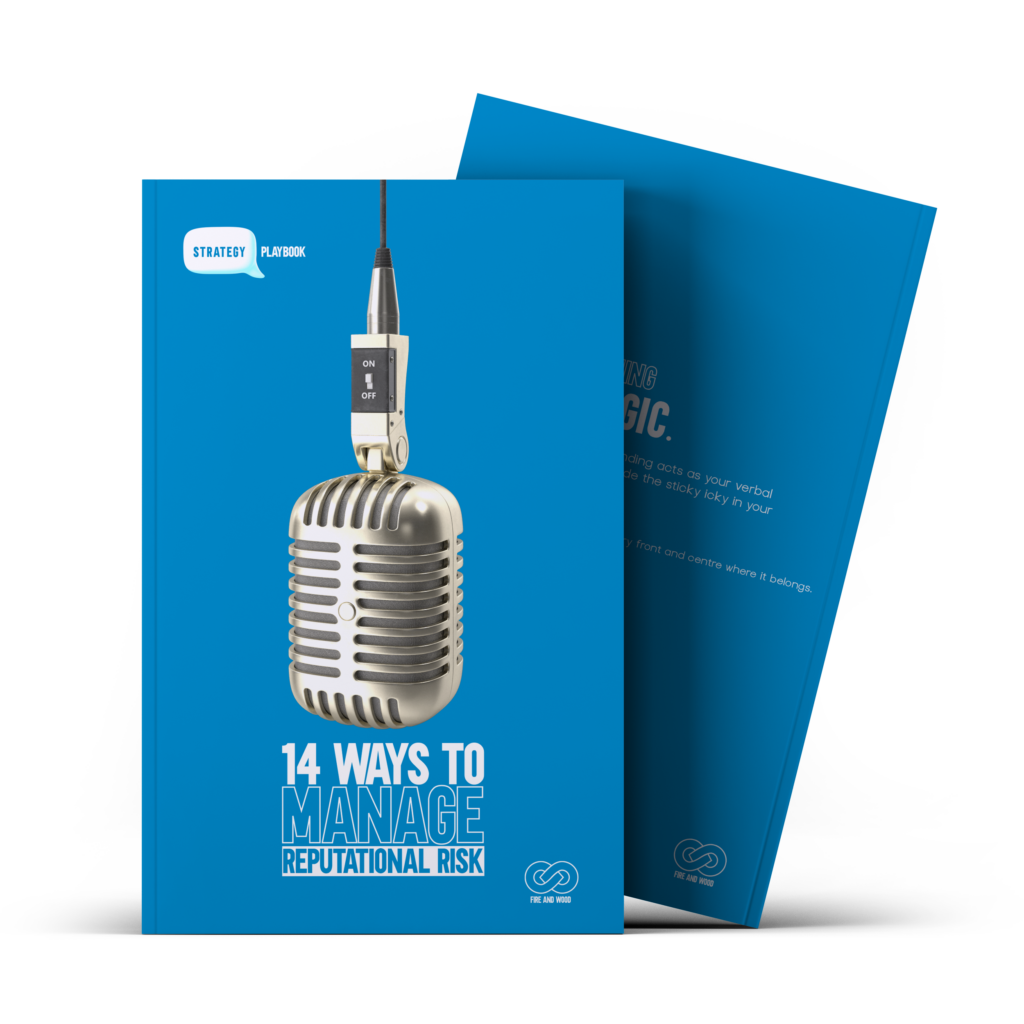Strategy
5 APPROACHES TO
MANAGE RESPONSE OPTICS
Starting-up a start-up from the eyes of starter-uppers.

Todd O'Keefe
Chief Content Officer
Table of Contents
Why it matters to have a flexible incident response plan
An important rule of thumb for reputational risk management is to remember social media and how everyone with a smartphone is now a roving reporter.
Anything can be broadcasted straight from the palm of their hand, which is a mixed blessing.
Any brand can expect positive reviews or even constructive criticism, but sometimes you will come across a sour message slandering your brand.
Whether it’s a private message or public post, most people expect a quick reply when reaching out to a business on social media.
HubSpot states that 79 per cent of customers expect a response to their social media posts or query within one day.
For added pressure, most expect it within the hour.
Getting in front of a negative risk response requires considering your stakeholder feelings before, during and after the public fallout from a negative incident.
You are not just putting your brand on the line, you must think about the names and faces of your trustworthy brand ambassadors as well.
Planning for unforeseen reputational risk factors
This courtesy should include your employees to avoid the risk that they may feel personally attacked because they work for your company.
Your board of directors might worry about the impact to their individual reputation. Your customers might worry about what it means for their future and lose trust in you.
But, how do we avoid public folly when defending a brand?
In short, you need a plan.
Reputational risk factors can be unforeseen sometimes. The best-laid plans need to be flexible and adaptive to new threats.
Regularly planning for events, and thinking about the appropriate responses are the best practice to keep your response skills sharp.
Manage brand optics
Reputational risks happen at all company levels.
Your CEO lets a racial slur fly during a webcast at a shareholder meeting. Your client files are accessed by hackers. Your eCommerce site goes down during a Black Friday sales promotion.
These events sound far-fetched and impossible right?
Not exactly—not today.
Planning, preparing and managing reputational risk means thinking ahead and having a plan.
It’s important to work together as a team to determine tiered levels of assessment, stick to the response plan and manage optics for how your brand appears during an incident response.
5 approaches to manage response optics
Keep these five steps in mind for staying in control when the shit hits the proverbial fan.
1. Be prepared
Different types of events require different protocols. Prepare to develop and refine those protocols.
Your CEO letting the f-bomb fly during a morning talk show shouldn’t require the same level of triage as your contaminated product making babies sick across the country.
These are both very important events, but they affect different groups of people in different ways.
Your plan should first assess what’s happening and its possible impact to the business.
Events should be ranked as level one, two or three, with each level increasing in the incident severity.
Level three should require the immediate attention of all senior management and the board, while level one could be handled by your human resources or marketing teams.
2. Consider all possible scenarios
Now ask: what else is happening?
Your plan should prepare you for every scenario.
Is this a one-off event or do you run the risk of this happening again? Has something similar happened before? If so, how was it handled?
Every event should be handled carefully, but the most important question to answer is to respond or not respond.
3. Avoid knee jerk reactions
Have a clear and direct chain of command with a checklist of what has been outlined, communicated and understood in advance.
It matters to communicate early and often, but you want to keep damage control to a minimum. Instead of having many representatives, designate one spokesperson for each level of severity.
Communicate this plan to everyone involved so there is no confusion.
When creating your plan, consider adding cheat sheets or approved speaking notes with key messaging, terminology and contact information.
4. Create a reputation response flow
Adam Sandler once said, “If a tree falls in the forest—is that the perfect place for a Nickelback concert?”
Jokes aside, the gist here is that you don’t need to go public with a response just because something happened.
Competitors would love your public apology or declaration because it gives them ammunition to use the negative press as a weapon.
They may try to bury your brand in headlines of suspected deception and unsavoury behaviour in order to improve their own public appearance.
5. Consider all stakeholders
Document what worked—and maybe more importantly—what didn’t work.
Were any parts of your plan missed or needed to be reworked or refined? Is additional training required?
Be sure to collaborate as a team immediately after the event.
Communicating early and often is important, but so is strategic communication.
Avoid an impromptu defensive remark, and instead, allow brand ambassadors to be an online advocate for the company.
Then, be sure to thank them in your response. It is difficult to stand up to trolls, so give credit where credit is due.
And, before you do anything impulsive, think ahead and run a diagnostic.
Are you ready to engage in a public debate without everyone on the same page?
Choose the right tool for the right outcome and make the right decision to control the narrative and the agenda.
Communicate your plan internally and protect your team from making mistakes.
Always be on the lookout for ways to increase your preparedness and use every experience as a case study for early warning signals of similar threats.
Manage your reputational risk
Interested in more ways to manage your reputational risk?
Grab your handy playbook for getting ahead of unforeseen reputational risk factors and avoiding public fallout from a negative incident.
Manage your brand optics, and stay in control by thinking ahead and having a plan.
GET THE GOODS
Our starter-upper blog is a place you’ll find creative trade secrets, shop talk and the trials and errors of a creative incubator.
Our goal is to make things people will enjoy and want to share—from storytelling and copyhacking best practices to articles, videos and white papers.
Join the Starter-Upper newsletter today and get more articles like these ones.

CONTROL
YOUR BRAND
NARRATIVE
Get ahead of a negative incident with your free copy of 14 Ways to Manage Reputational Risk and learn how to activate and assess your plan after an incident happens.
GET THE STARTER-UPPER INSIGHTS

